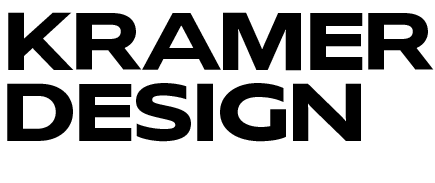AI often conjures sci-fi images of robots taking over the world, but in the creative industry its current applications are far more practical and grounded. AI provides powerful systems to rapidly perform tasks require processing large amount of data, solving complex problems and manipulating natural language. AI is a tool that amplifies our creativity, speeds up the brainstorming process and offers a sandbox for testing and refining ideas rapidly.
How does AI fit into our creative process? And what does it mean for your brand? Let’s explore.
The Art of Prompting in Generative AI
Central to utilizing AI in the creative process is the concept of prompting – providing a specific instruction that guides AI to generate content. Inputs can include text, reference or images.
A prompt can be as simple as a sentence or a detailed set of instructions. The more specific the prompt, the more aligned the output will be with your expectations.
AI can be asked to take on the specific roles, both as creator and audience. An effective prompt strategy involves asking the AI to act as a particular specialist in providing its response and target its reply in language and tone to a specific audience or tone.
Here’s a humorous example:

Prompt crafting involves a clear understanding your audience and the design challenge at hand, expertise in language and creative problem-solving skills. It’s about striking a balance between guiding the AI and leaving enough space for creative exploration.
Rarely is the first output from AI perfect. The process is iterative and requires refining the prompt based on the initial results. This might mean adding more detail, defining roles, adjusting the tone or specifying certain elements to include or exclude. It’s a dialogue with the AI, with the hope that each iteration brings you closer to the desired outcome.
But in the end, a perfect response is not our goal. The replies provide a jumping off point and require a human touch to align with the nuances of the brand or the design goals.
Used properly, AI can impact the creative process positively in many ways. From initial strategic ideation to SEO to content creation, thoughtful use of AI tools can empower designers to provide deeper, better tested and broader solutions to branding and design tasks.
The Benefits of AI for Teams and Clients
For the Creative Team
Enhanced Efficiency and Productivity: AI tools can automate time-consuming tasks that typically bog down creative teams, such as data analysis and preliminary research. This automation allows creatives to tap into data-driven options quickly and focus on strategic and high-impact design work, speeding up the creative process and increasing productivity.
Expanded Creative Horizons: AI offers a playground of inspiration and experimentation. With its ability to generate numerous variations of a concept quickly, creative teams can explore a broader range of ideas and solutions than would be feasible manually.
Data-Driven Insights: Leveraging AI for data analysis helps creative teams gain deeper insights into audience preferences, trends and the effectiveness of proposed design directions. Designers can make informed decisions that align with strategic objectives, ultimately leading to design solutions that are more tailored and effective.
For the Client
Personalized and Targeted Solutions: AI’s ability to analyze large datasets enables the creation of highly personalized and targeted content strategies. This results in marketing materials and branding strategies that resonate more deeply with the intended audience, leading to improved engagement and conversion rates.
Cost Efficiency: By streamlining certain aspects of the creative process, AI can reduce the time and resources spent on projects. This translates to cost savings without compromising on the quality of the creative output. It allows for budget allocation to other strategic areas or projects, enhancing overall ROI.
Competitive Edge: Design teams that leverage AI-integrated strategies for their clients provide a competitive advantage by ensuring their branding and marketing efforts take advantage of technological innovation. The use of AI in creating dynamic, engaging, and interactive brand experiences can set a brand apart.
Navigating Ethical Considerations in AI Use
As we integrate AI into branding and design, ethical considerations are important to us. Navigating these issues carefully ensures that our use of AI enhances the creative process and upholds our values and responsibilities to clients and society.
Transparency in Use
Transparency about the use of AI tools is foundational to ethical practice. It’s crucial for users to communicate openly with their audience about how and why AI is used. This includes detailing the role of AI in the creative process and being clear about how data is used to inform AI-generated outputs.
Intellectual Property Rights
The question of who owns AI-generated content is complex and evolving. We must navigate intellectual property rights carefully, ensuring that we have the rights to use AI-generated content. This might involve understanding the terms of use for different AI platforms and potentially seeking legal advice to ensure compliance.
Brand Authenticity
Aligning AI use with brand values is essential for maintaining authenticity. Brands should develop guidelines for AI use that reflect their ethical standards, cultural sensitivity and commitment to authenticity. Design teams should utilize AI tools and datasets in a way that does not perpetuate stereotypes or harm.
Mitigating Bias
AI systems learn from vast datasets, and these datasets can contain biases that reflect historical or societal inequalities. Mitigating bias in AI-generated content is crucial to prevent reinforcing stereotypes or excluding groups. Potential areas of bias include:
- Gender Bias: AI-generated content might skew towards stereotypical representations of gender roles if the training data is biased.
- Racial and Ethnic Bias: Similar to gender bias, AI can perpetuate racial and ethnic stereotypes if the underlying data reflects societal biases.
- Accessibility Bias: AI tools might overlook the needs of people with disabilities, creating content that is not accessible to everyone.
Synergizing AI with Human Creativity
It’s important to recognize that AI, while powerful, is not a silver bullet for design and branding challenges. The true value lies in its synergy with human creativity – combining AI’s efficiency and data-processing capabilities with the strategic insight, emotional intelligence and creative intuition of a team of talented and responsible human designers.
This partnership can elevate the creative process, leading to outcomes that are innovative, impactful and deeply aligned with the brand’s values and goals.
For creative teams, this means embracing AI as a collaborative partner that enhances their work rather than replacing it. For clients, it underscores the promise of AI-enhanced strategies to deliver more personalized, efficient and effective branding solutions that drive engagement and ROI.
In Closing
The integration of AI into the creative process heralds a new era of design and branding, where the fusion of technology and human creativity opens up new vistas of innovation. By understanding and leveraging the unique benefits AI offers to both creative teams and clients, we can responsibly navigate the challenges of this new age with agility, efficiency and creativity.

